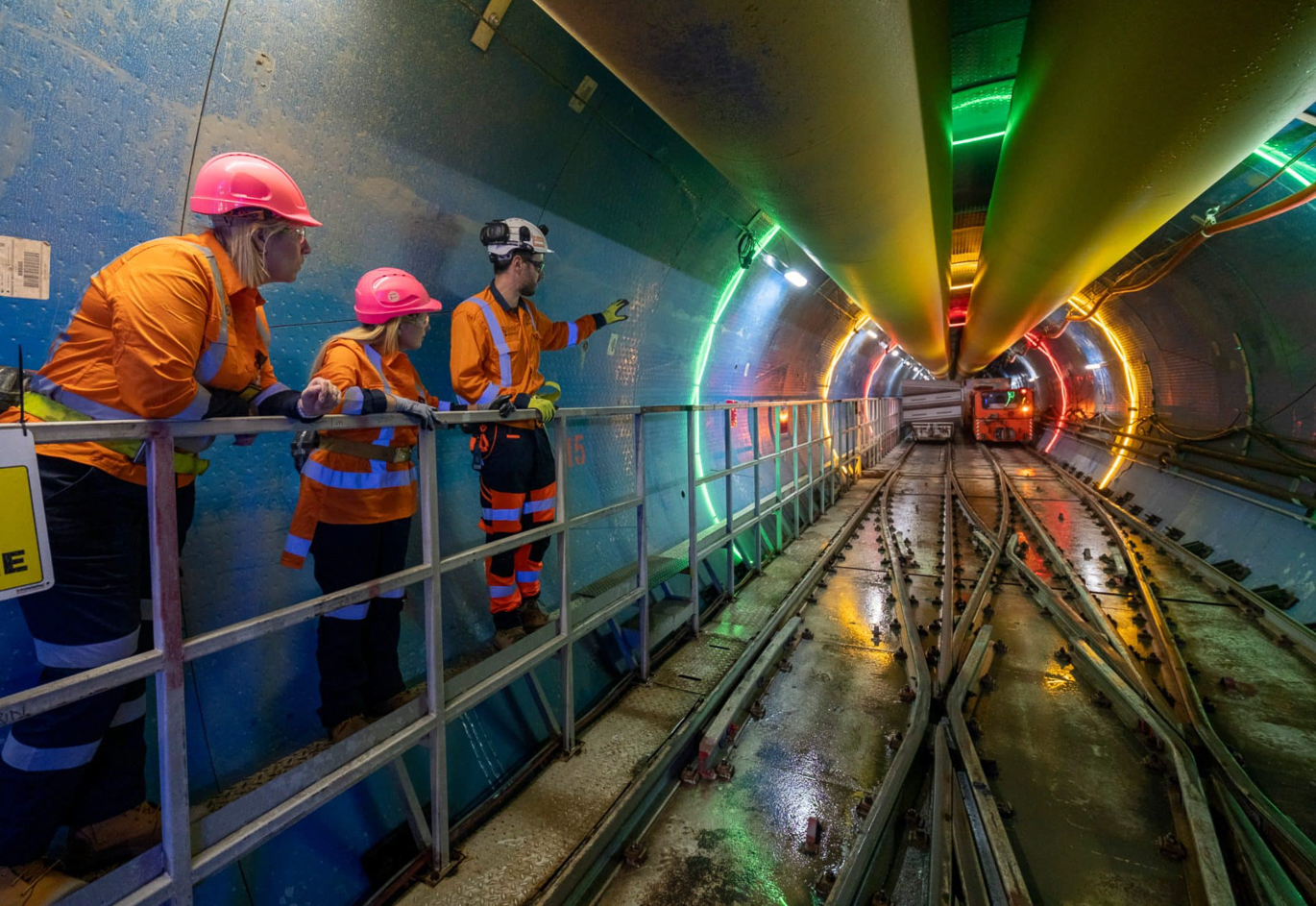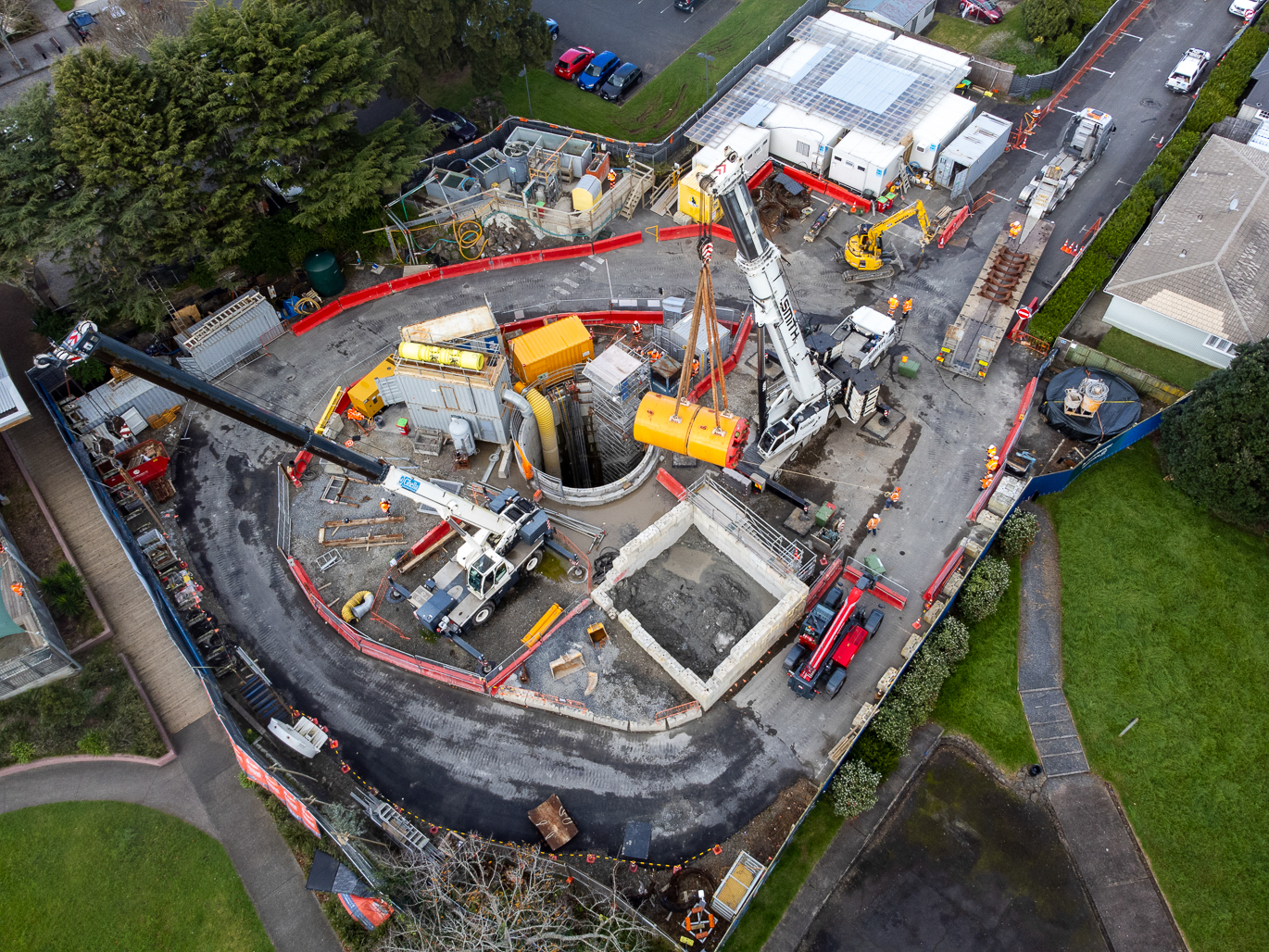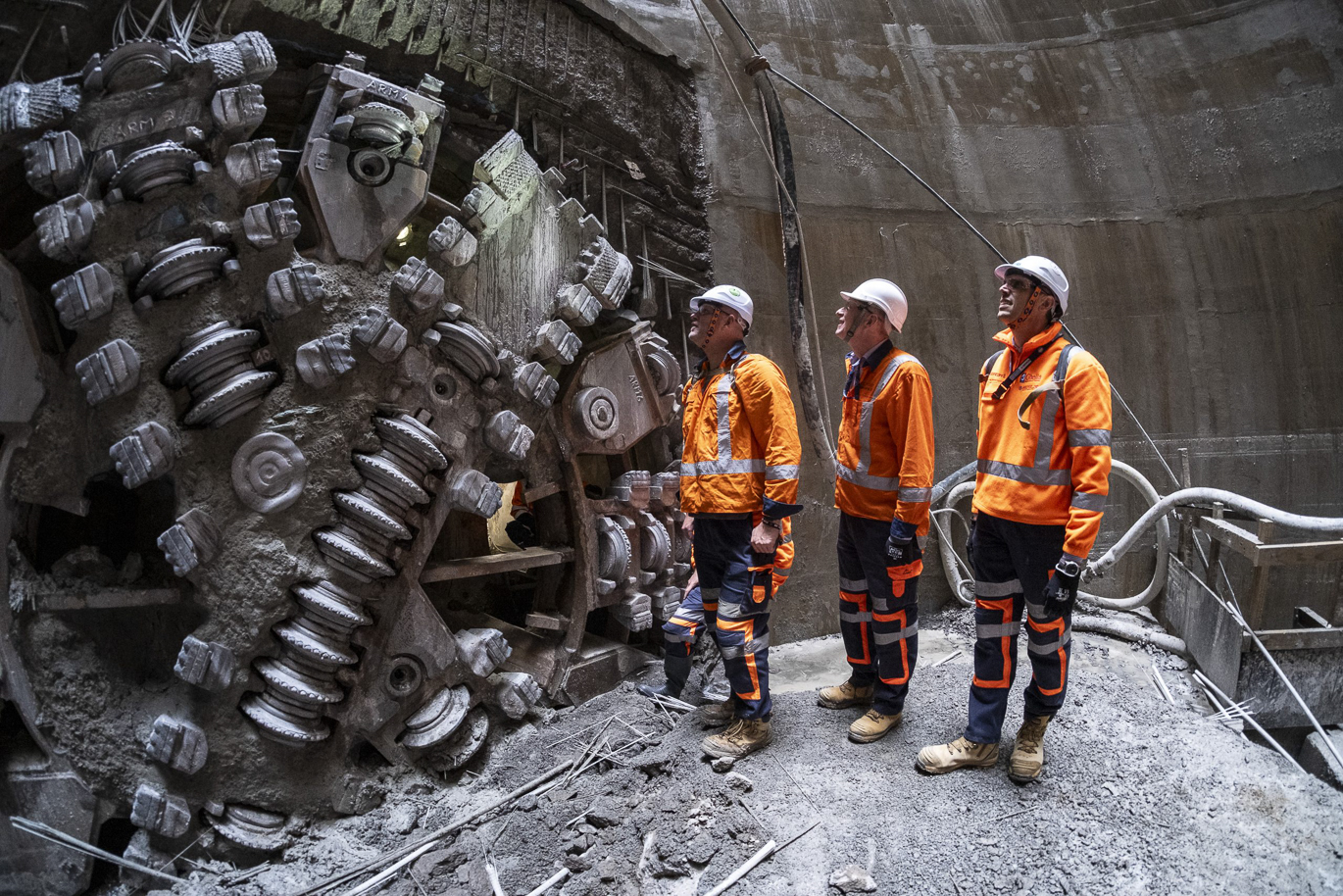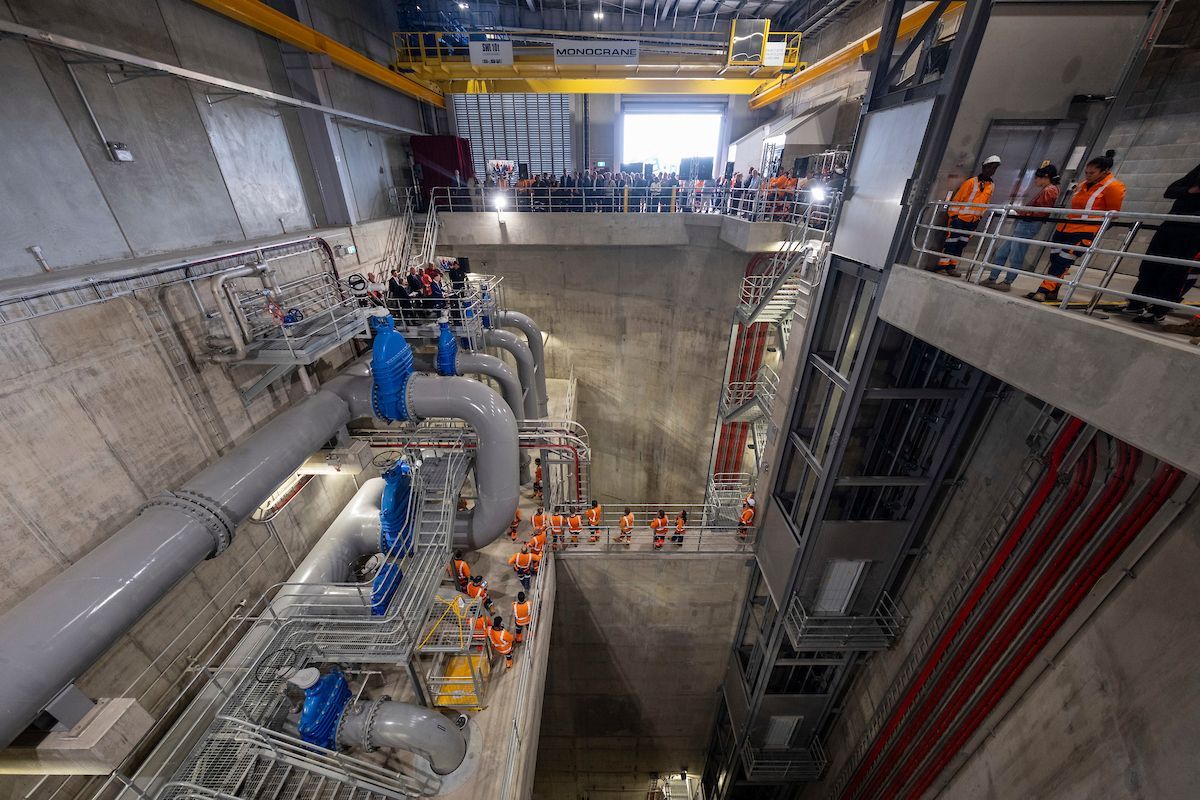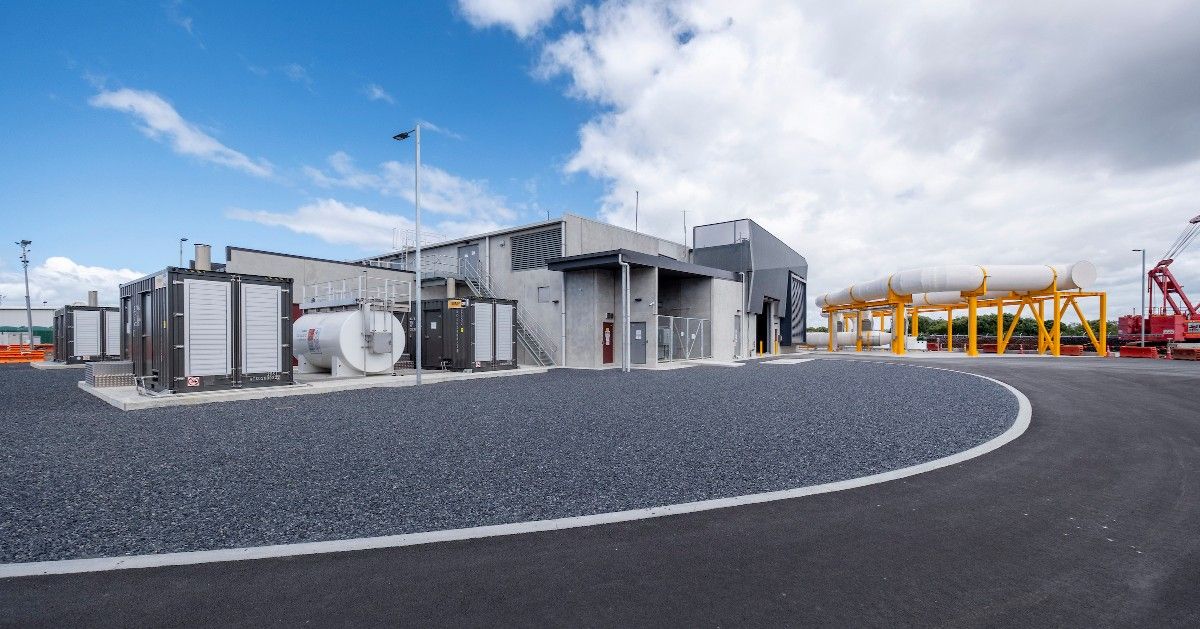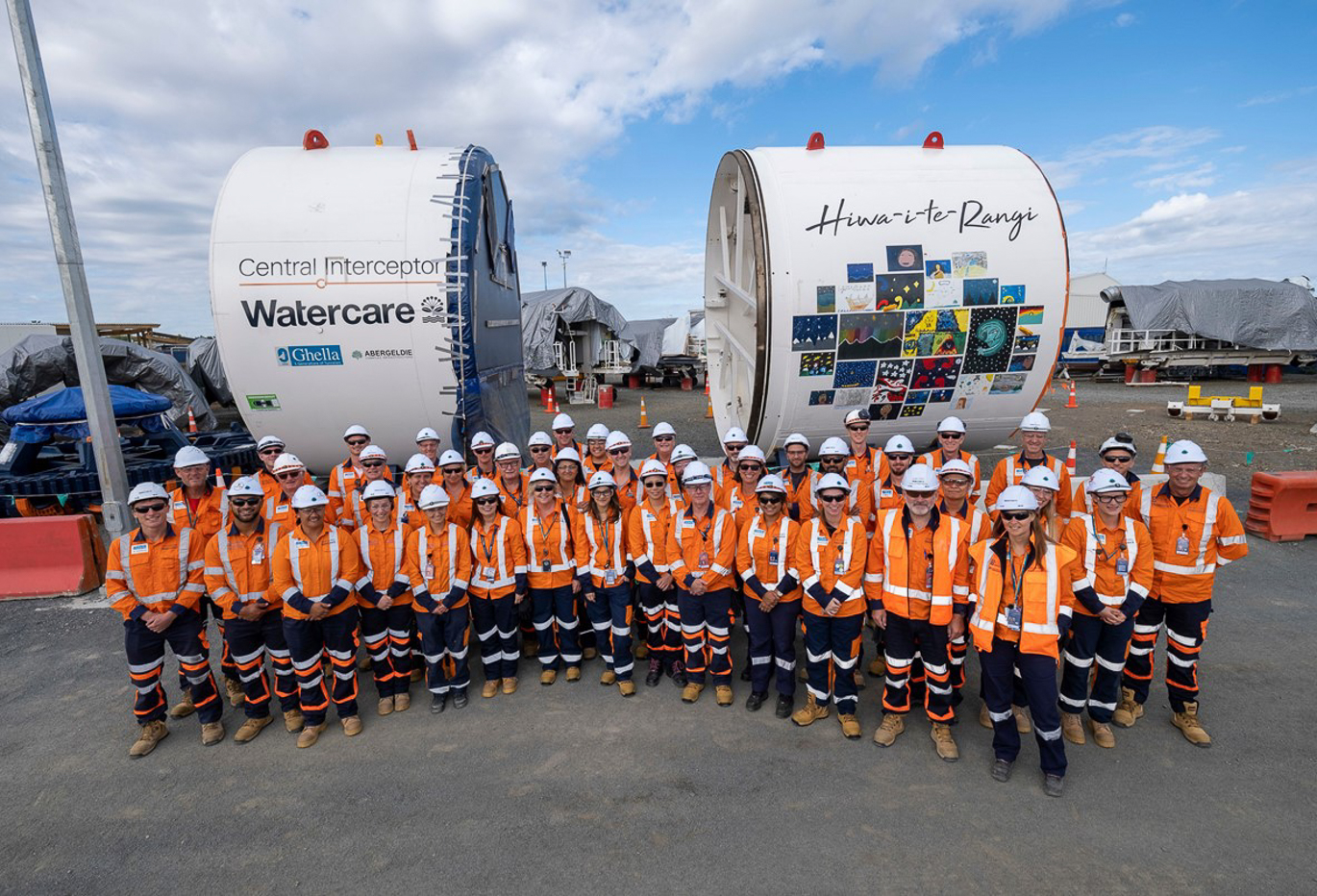16
CONSTRUCTION SITES
16.2km
TUNNEL LENGTH
4.5m
TUNNEL DIAMETER
15-110m
TUNNEL DEPTH BELOW THE CITY
Abergeldie, in a joint venture with Ghella, is delivering the Central Interceptor Project. This project will provide additional wastewater capacity to serve Auckland’s growing population and will reduce the frequency and volume of wastewater overflows, preserving the area’s beaches, estuaries, and waterways. The Central Interceptor Project involves the construction of a 16.2km long, 4.5m diameter underground tunnel that runs between 15m and 110m below ground from Grey Lynn and under the Manukau Harbour to the Māngere Wastewater Treatment Plant using tunnel boring machines.
For more information, visit the Watercare website, or watch the video.
Scope of works
The scope of work involves:
- Construction of a 4.5m diameter interceptor tunnel that will run underground for 14.7km between 115 and 110m below ground, crossing the Manukau Harbour at approximately 15m below the sea bed.
- Construction of 18 permanent shafts (excavation and lining) for operational use and future access.
- Drop shafts.
- Flow control and overflow structures.
- Grit traps.
- Air vents and air treatment facilities.
- Pump station and rising mains.
While the Central Interceptor project is a huge tunnelling achievement, a very large part of the project scope involves the redirection of existing sewer transmission lines to the interceptor, and the construction of a large pump station and rising main inside the WWTP. The Central Interceptor work programme includes:
- Rising main sewer installation using open cut installation, battered trench, sheet piled trench and trench shoring installation methods.
- Gravity sewer installation using tunnelling, micro tunnelling, pipe jacking, HDD, and open-cut installation.
- Structural relining of existing sewers.
- Pump station retrofit and decommissioning at PS25 Miranda Reserve and PS23 Hillsborough.
- Sewer flow control chambers, including actuated gates, bifurcation chambers, and grit chambers.
- Biological air treatment facilities, as well as odour beds/biofilters and overflow structures.
In total, there are 100 network sewer work packages to be completed to facilitate the works and provide temporary and future connections.
The work also includes the construction of a 5 cumec pump station, rising main and reconstruction of the confluence chamber at Māngere where the eastern, western, and south-western interceptors converge before entering the plant via the primary screens building. The work inside the treatment plant includes significant replacement of plant infrastructure including odour beds, odour ducts, relocation of WWTP service lines, air, power WEH, recycled water etc., as well as integration of the control system with the Māngere plant. Instrumentation in the confluence chamber and the pump station are wired back through the plant as well as the flow control gates controlled remotely by the Māngere plant operators through SCADA. Other treatment devices underway on the project include the air treatment facility at May Road, which is a biological odour control process.
Critical considerations and sensitive works
This work has required careful consideration, including extensive analysis and vibration monitoring, particularly where the project has approached the highly sensitive plant room.
Other sensitive works have included isolating parts of the treatment plant to allow works to happen including, taking one odour bed completely offline for a full rebuild and relocating plant services, comms, and water lines. These critical services all had to be cut over in a staged approach to ensure the continuity of the process within the treatment plant.
Safety and wellbeing
The experience of workers on the project sets it apart. All people working on the project complete a 2-day safety induction to understand the project, the health and safety risks and the safety systems in place to ensure their well-being
A proactive health and safety culture is a key priority, with significant effort put in to develop this culture and recognising and rewarding teams and individuals that excel in meeting the project's health and safety objectives. The project team works closely with Mates in Construction and WorkSafe New Zealand. Additionally, in partnership with Watercare, the team sponsors the ‘PPE For All’ program, providing high-quality PPC and PPE to all staff members.
Managing the programme and maintaining momentum
The Central Interceptor project faced significant challenges due to COVID-19; however, effective collaboration with Watercare helped us overcome these issues and maintain momentum.
Key initiatives and joint decisions included reorganising work, changing subcontracting arrangements, changing shift patterns, providing additional resources to cover critical roles when people were required to self-isolate, and physically reorganising the workplace and methods to minimise the risk of infection and spread of disease.
Stakeholder management and community engagement
Stakeholder management and community engagement have been key factors driving the success of the Central Interceptor project. Spanning across 18 main construction sites from Māngere to Grey Lynn, we integrate with and inform diverse communities through 'Meet-the-Contractor' days held prior to work commencement.
Community engagement on the project also includes school visits and supporting local charities including Breast Cancer New Zealand. A contractor stakeholder management team leads the community consultation in partnership with Watercare’s strategic stakeholder and community management approach providing community updates, newsletters, information packs, a 24/7 response line, charitable works, and donations.
Innovation and value-add
The project has achieved the highest ISCA leading accreditation. Innovations include using HDPE liners and glass-reinforced plastic for extended design life and safer construction, repurposing temporary works as permanent, and employing electric trucks that emit 79% less carbon than diesel ones.
Additionally, we implemented the Dig Deep program to improve staff numeracy and literacy and partnered with Māori to establish a Māori-owned business, enhancing economic outcomes.

